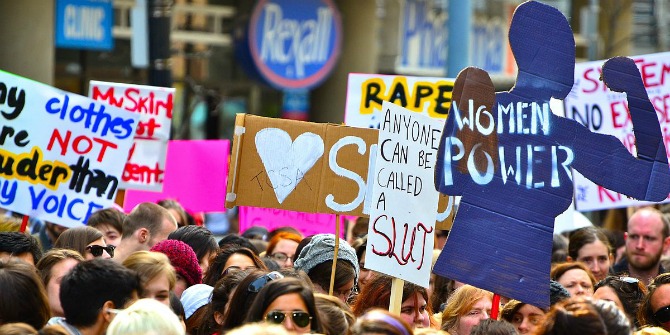“Kill All Men”: Modern Feminism and its Current Rhetoric
Cultural implications of feminism have evolved over the years
Beyonce, unfortunately, was mistaken. Girls do not run the world. In fact, we are far from it. Of 193 countries around the world, 21 women are the head of state or government. That is around 11%. As of 2021, only 25% of all national parliamentarians are women. Only 6 countries give women equal legal work rights as men (The US is not one of them). For every female film character, there are 2.24 men.
There’s still so much to be done, but if we zeroed in on modern feminism, there’s almost a willful ignorance of real world issues: men suck, and women are awesome. For decades now, modern feminism has climbed higher and higher into its own ivory tower. Mini-movements like #killallmen, rejecting masculinity, and misandry have come to represent the face of modern feminism, and all the momentum for real gender progress has been lost.
The momentum of feminism has fizzled out, as it only appeals to women; but how will radicalizing women about their oppression change anything, if the world is still a man’s world?
Most women understand the irony behind #killallmen. They understand it is a satirical statement, a witty reference to the long standing history of femicide and an expression of their annoyance with the inescapable patriarchal system. But this is easily misinterpreted. More and more, modern feminism is being met with backlash from “men’s rights” groups, who believe that misandry is consuming popular culture. By championing movements like #killallmen, feminism alienates men, limiting itself from any further expansion.
In 1949, Simone de Beauvoir wrote in The Second Sex that feminist liberation was women’s work. It was not a responsibility for men, but for women, to liberate themselves. But is there any more progress that women can attain without the integration of men into the movement?
The issue is that Beauvoir also imagined a world where femininity was regarded with equal value as masculinity. But that is not what our world looks like. Femininity, and in particular, feminism, is often regarded as an annoying womanly activity, with unshakable hints of “sjw” energy. Know someone who’s a feminist? Do they have any other personality traits? Much like the 1960’s housewife’s book club meetings, modern feminism has become marketed as something exclusively feminine. And as a result, it’s not taken seriously.
There’s no telling which came first: Did men stop taking feminism seriously because it alienated them? Or did feminism alienate men because it wasn’t being taken seriously by them?
Regardless, the current feminist narrative is getting us nowhere. Feminism has become exclusive, and therefore, stagnant. Thousands of women have written thousands of books and essays on feminist theory. But the question is: do men read them? A look at the gender divide in the gender studies major answers the question. In 2012, at the London School of Economics and Political Science, a measly 5% of gender studies majors were men. Feminist theory and gender studies completely fail to appeal to men, and men are even often shamed for being feminists.
Unfortunately, we need men in gender studies, not only for men to learn about feminist theory, but also so men’s experiences can be examined. Currently, gender studies and feminism only tells the story of one gender to be read by its own gender. With the incorporation of well-developed male perspectives, feminism may finally overcome its current slump, reach a wider audience, and actually make a greater impact.







